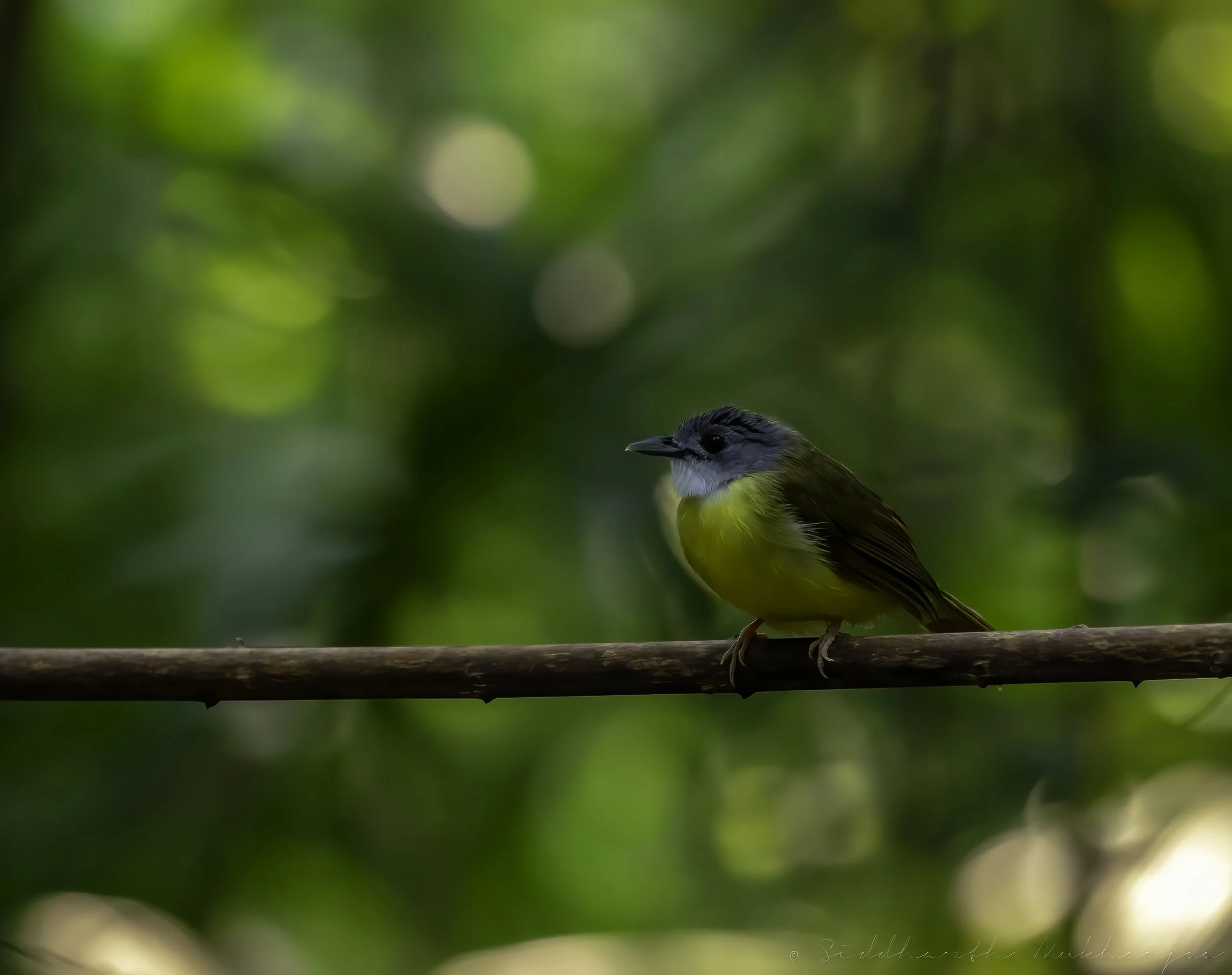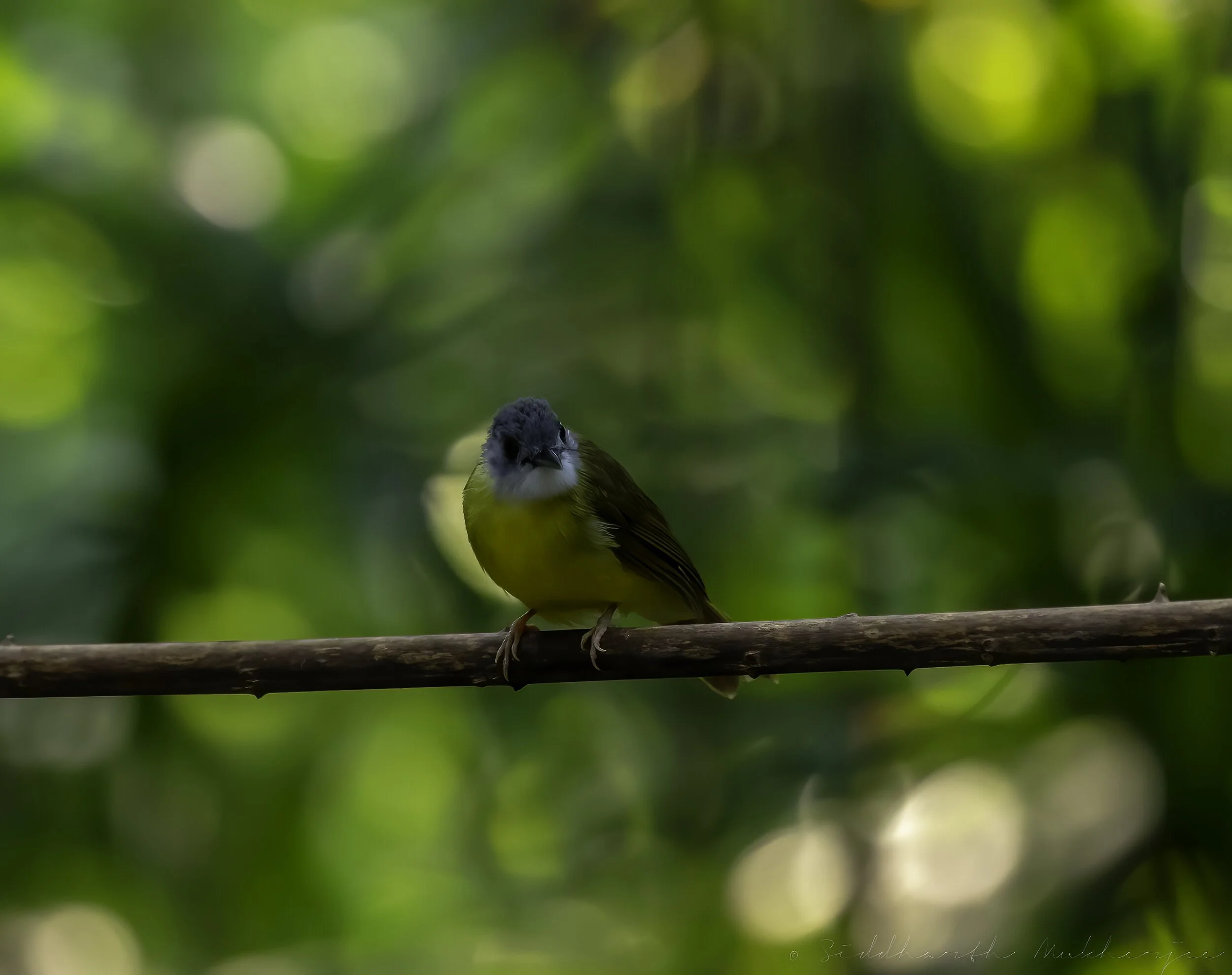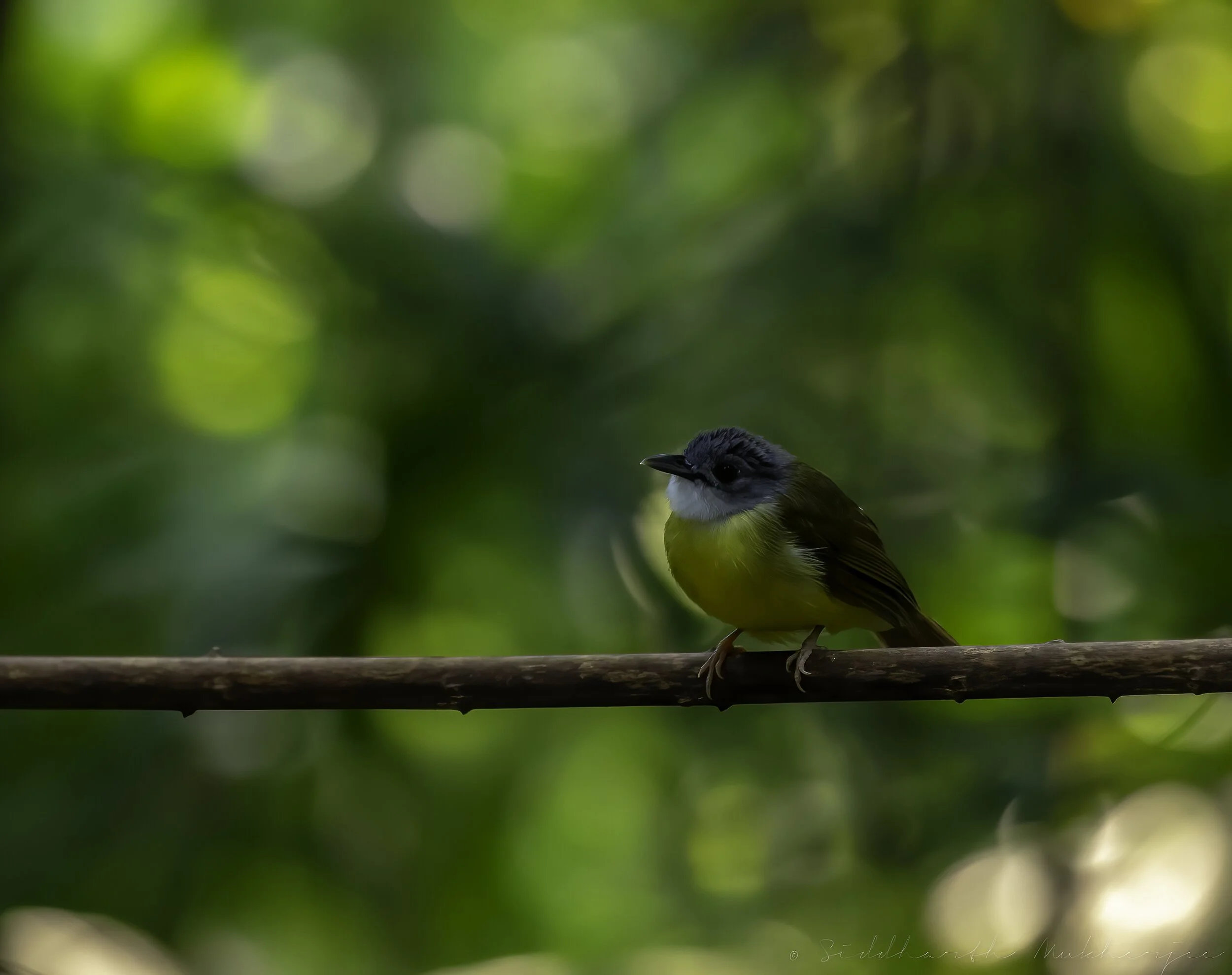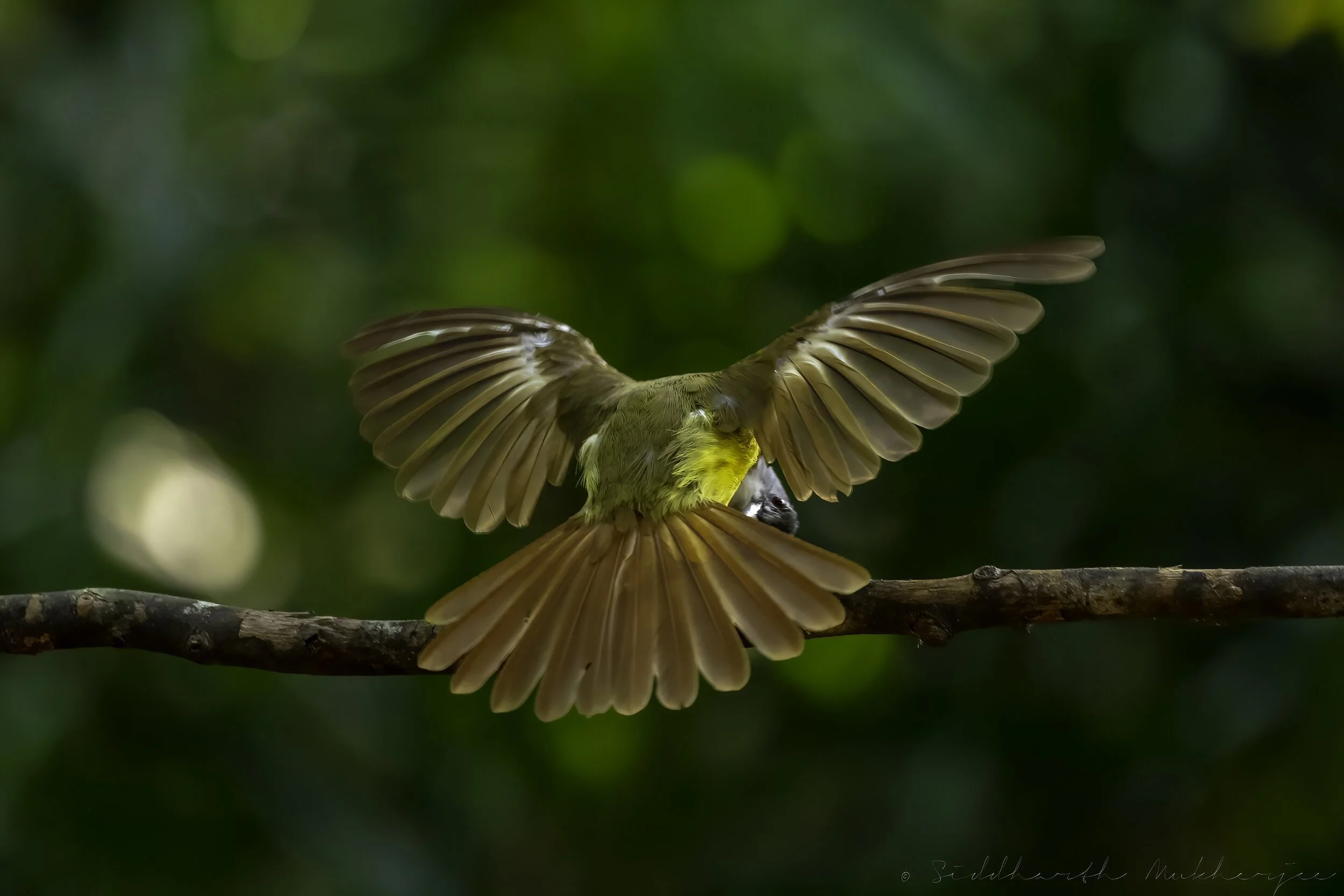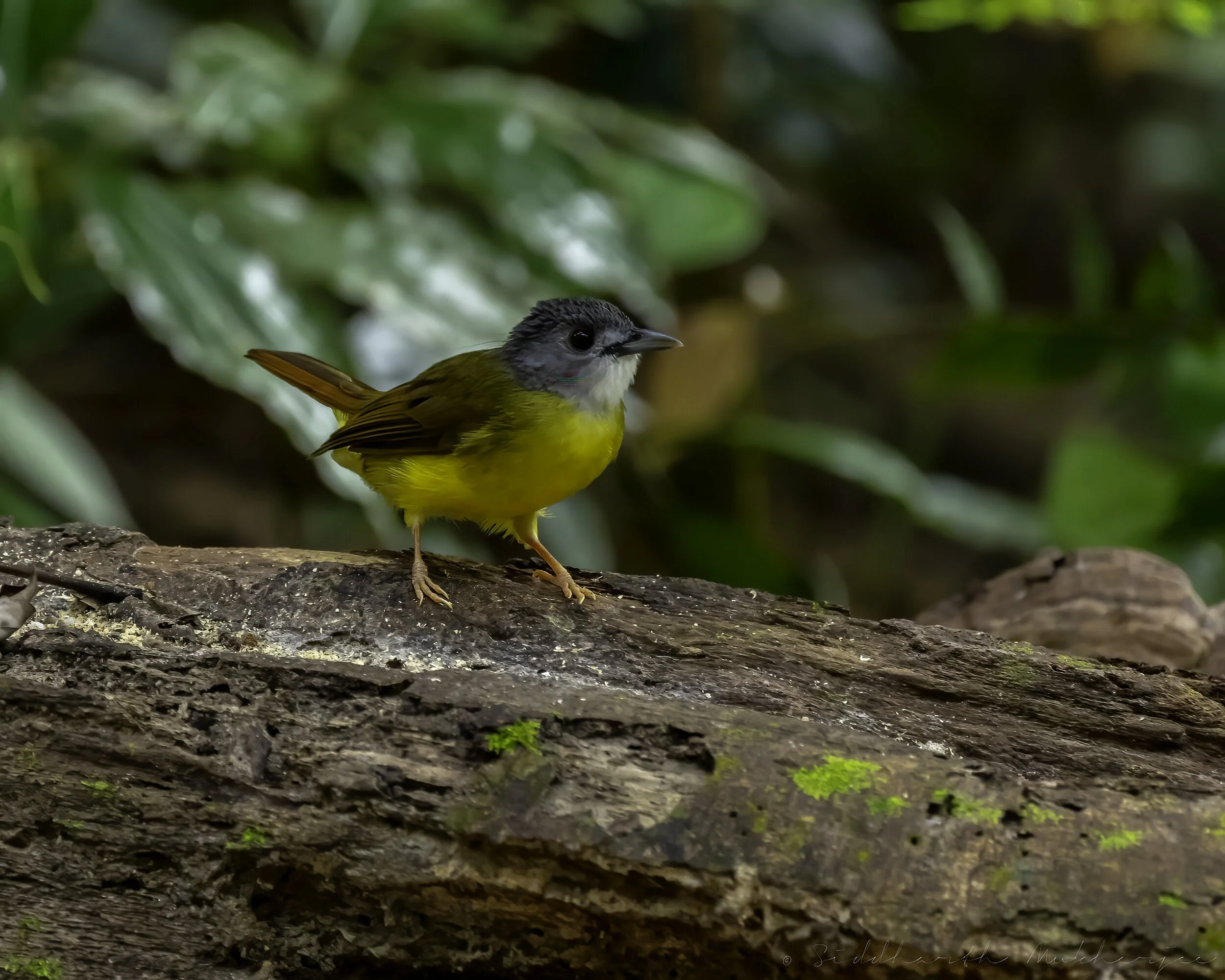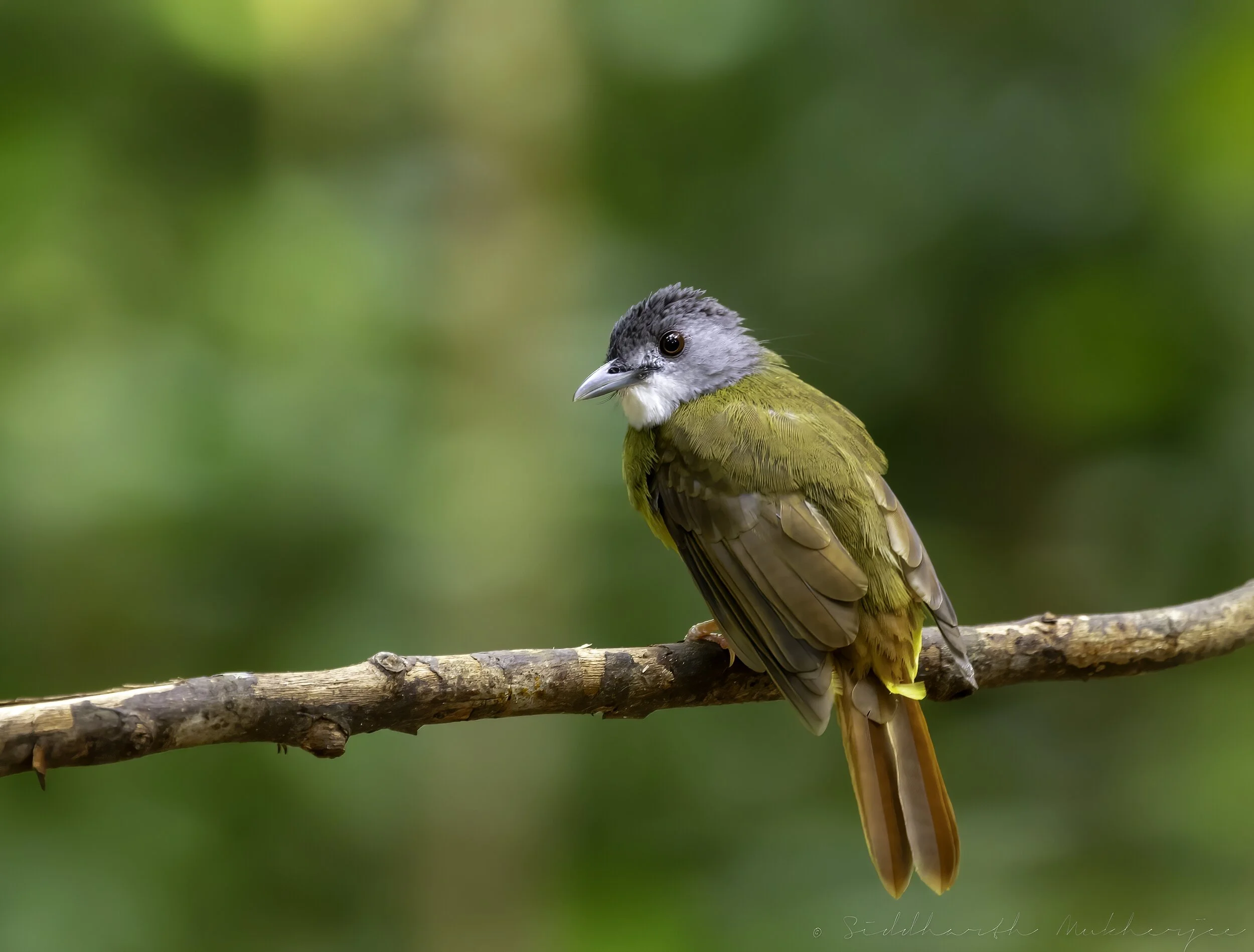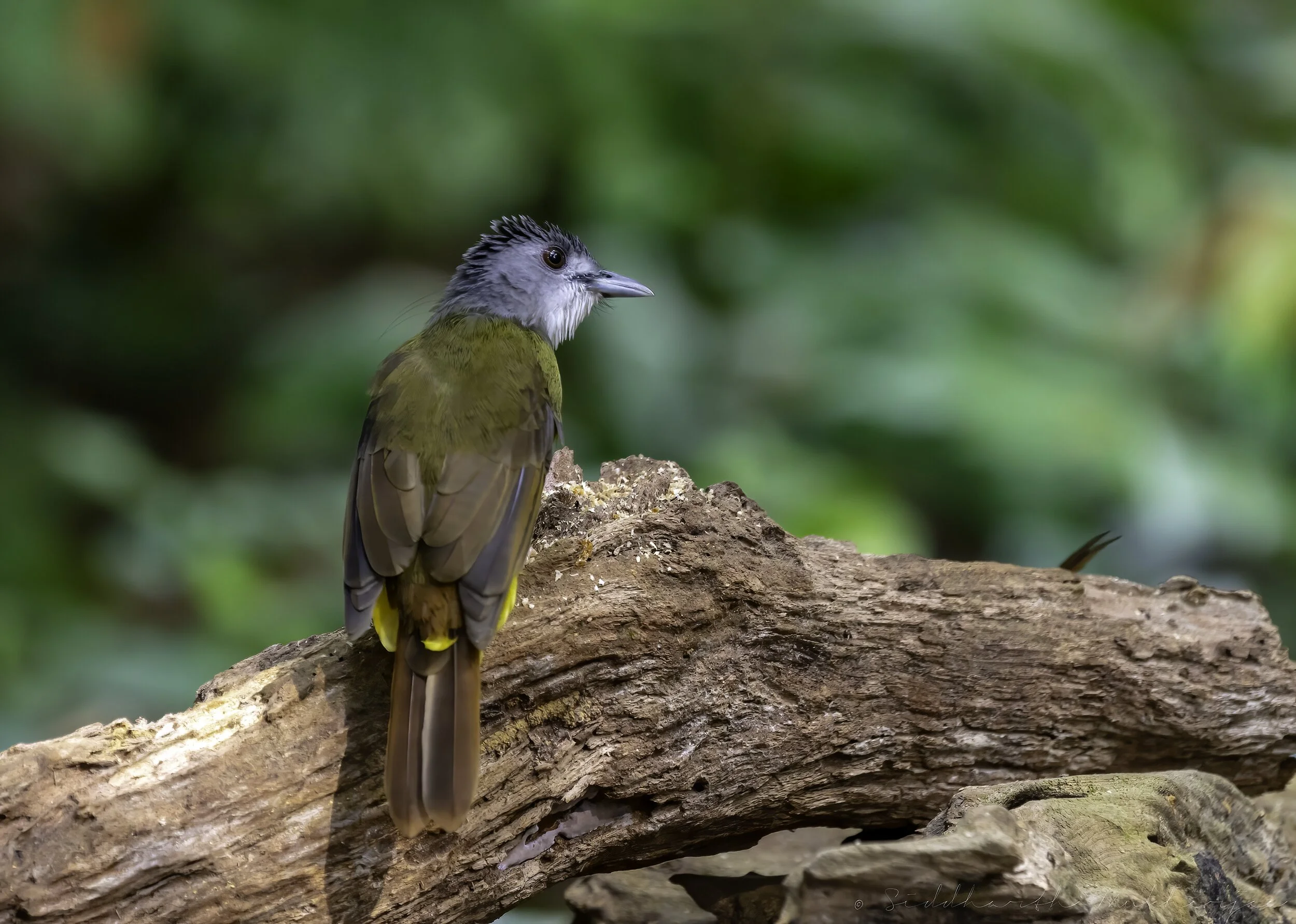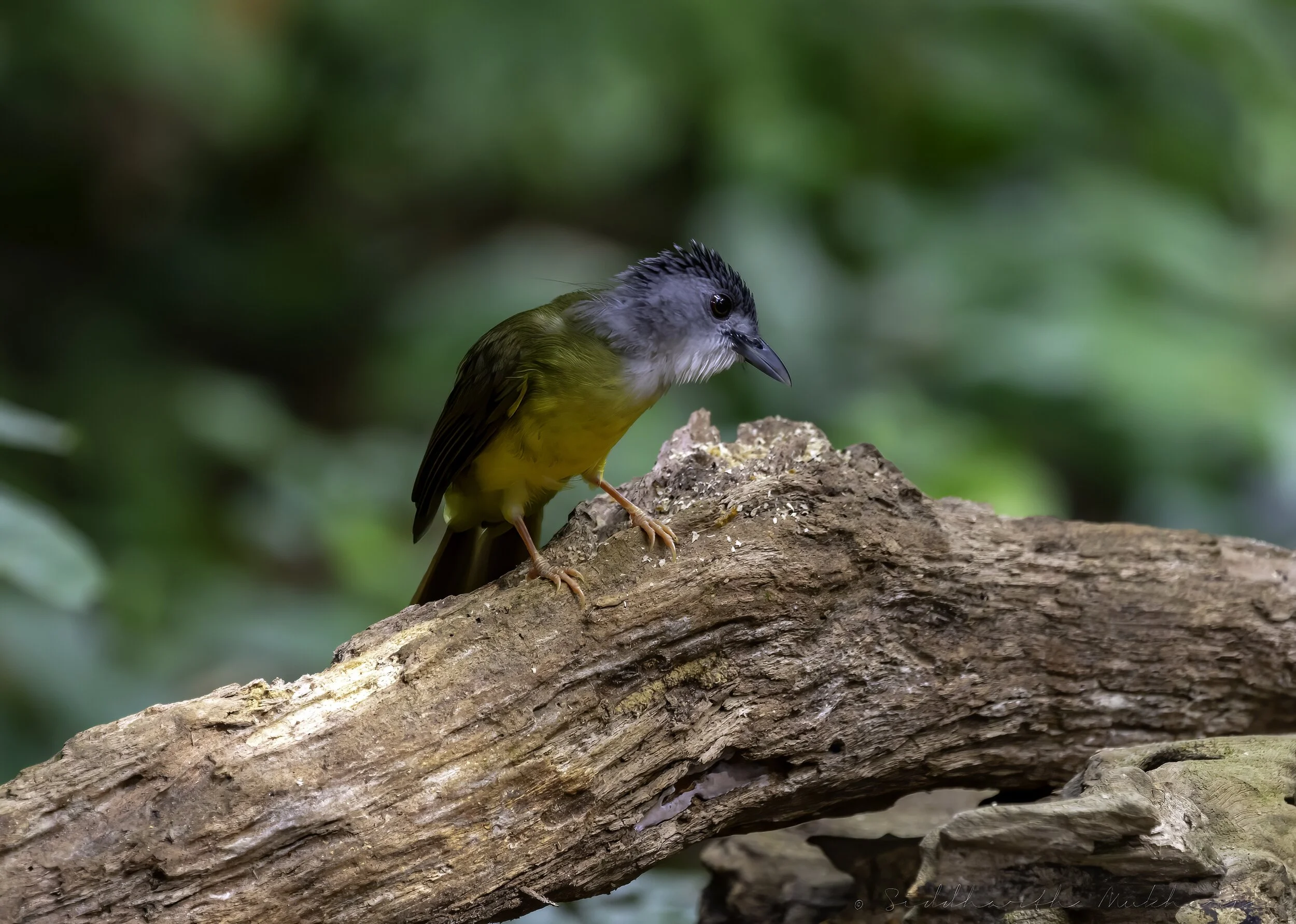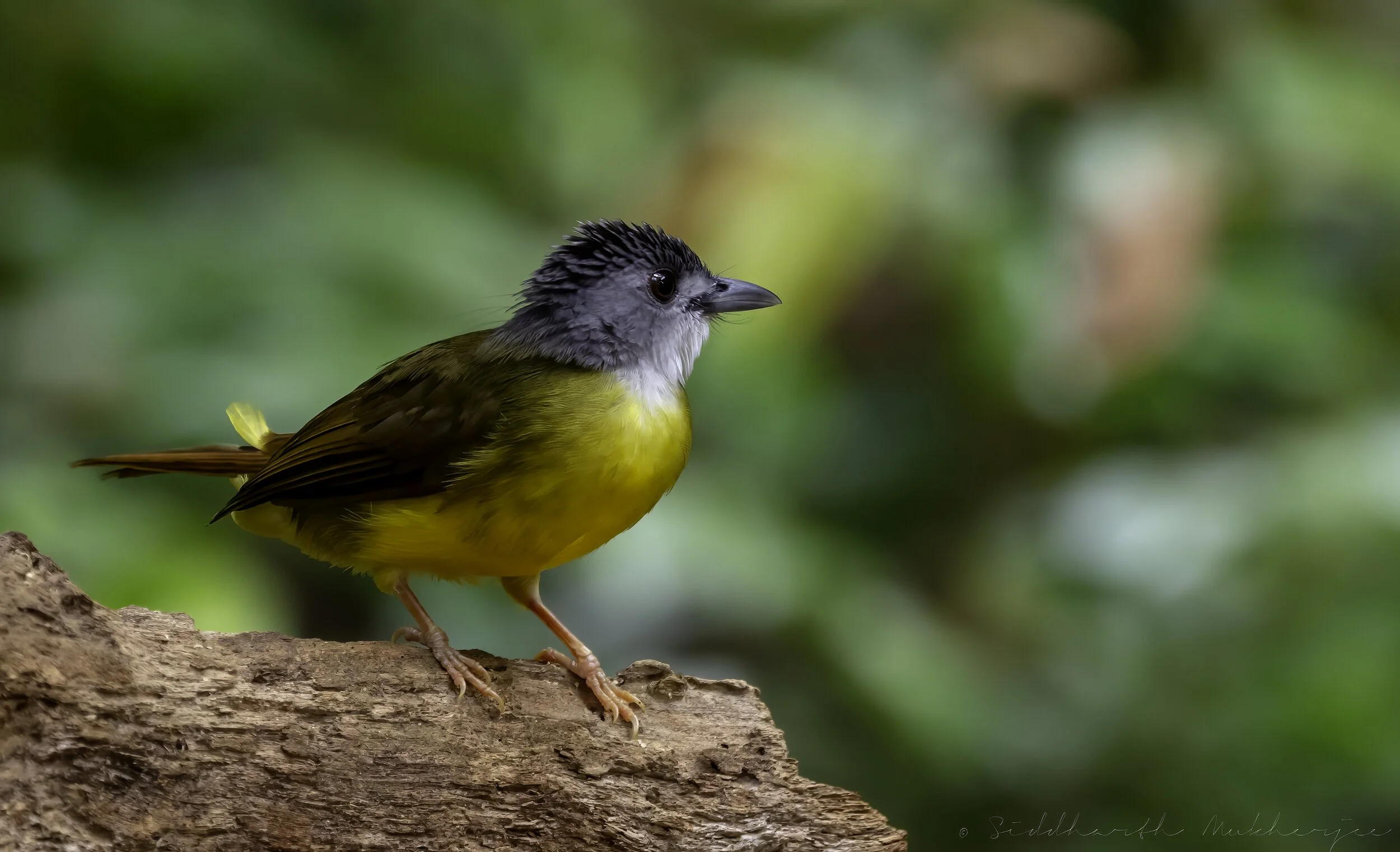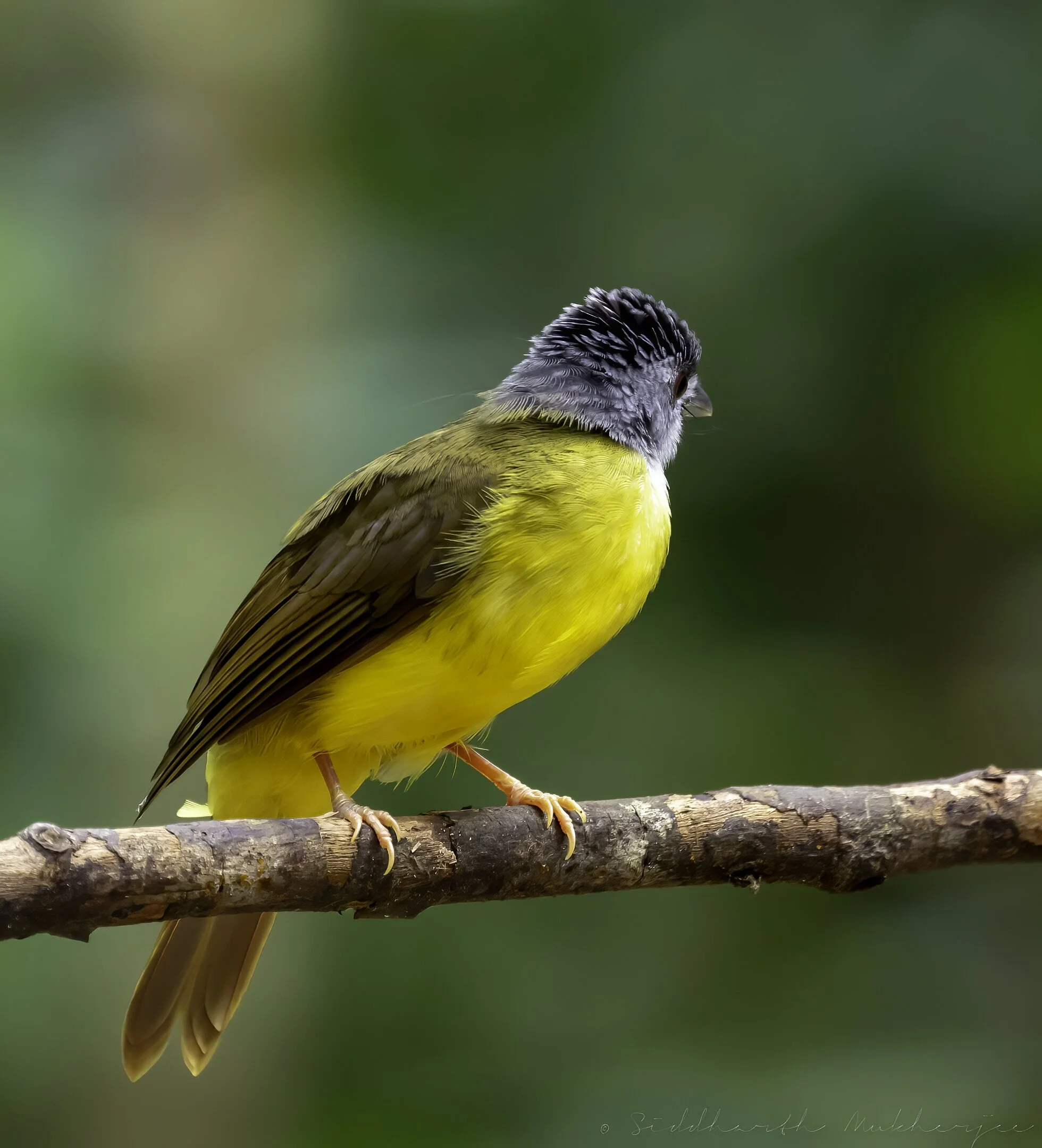Yellow-bellied Bulbul
Alophoixus phaeocephalus
Krau Wildlife Reserve, Malaysia
Continuing on Bulbuls, this week is about the beautiful yellow-bellied bulbul and for this bird we make our way to Malaysia - to the vicinity of the Krau Wildlife Reserve. Krau Wildlife Reserve is the largest wildlife reserve located in the Titiwangsa Mountains, in the central state of Pahang, Malaysia. It was established during the British Colonial Administration - which loosely describes the set of states on the Malay Peninsula and the island of Singapore that were brought under British hegemony or control between the late 18th and the mid-20th century.
The Krau Wildlife Reserve is one of the least known but most important conservation areas within Malaysia’s network of protected areas. Ask the average Malaysian on the street if they know where or what the Krau Wildlife Reserve is and chances are, they would have never even heard of it. Yet today at about 63,395 hectares, Krau is one of the last remaining areas of lowland tropical rainforest left untouched in Peninsular Malaysia – and therefore one of the most important. Krau is large enough to contain 3 relatively small river systems (Krau, Lompat, and Teris rivers), as well as conserve the montane ecosystem of part of the Mount Benom (or Benum) massif, one of the tallest peaks in Malaysia at 2,107 m. The most important habitat in Krau though, is the lowland zone which comprises over 50% of the reserve and has an incredible amount of biodiversity.
Most of the reserve is strictly off-limits to the public with the exception of researchers who already have prior approval – it has been this way for decades. The only place in Krau where tourism is allowed and promoted is the entry point at Kuala Gandah, an elephant rehabilitation sanctuary located at the southern border that can get really busy on certain days, given that the main draw here are the tame elephants that people get to feed and bathe. There is also a relatively unknown seladang breeding center at another entry point - Jenderak Selatan. The main aim of the reserve is to protect these Gaur that are present in large groups in the areas that have been inhabited by the aborigines. There are many Gaur in the Krau River valley and salt licks in the east and south of the reserve.
The reserve is managed by the Department of Wildlife and National Parks. In the 1960s, Lord Medway led a zoological expedition to Gunong Benom which latter attracted many scholars, biologists and primatologists for research on the eastern part of the reserve called Kuala Krau. The lowland forest area contains a very high diversity of birds and mammals especially primates and bats including the rare Malayan peacock-pheasant which is still found in the reserve in some numbers.
Despite the closed off status to the public, I was fortunate to be able to explore the forests of the Krau Wildlife Reserve at Bukit Rengit for a birding trip. Although the visit was very brief, Krau still impressed me greatly with its beautiful, untouched rainforest, and rich biodiversity.
‡‡‡‡‡
Yellow-bellied Bulbul
The yellow-bellied bulbul (Alophoixus phaeocephalus) is a species of songbird in the bulbul family, Pycnonotidae. It is found on the Malay Peninsula, Sumatra and Borneo in its natural habitat of subtropical or tropical moist lowland forests. It was originally described in the genus Ixos and alternatively classified in the now defunct genus Trichixos and later placed in the genus Criniger until moved to the genus Alophoixus in 2009.
Alternate names for the yellow-bellied bulbul include the crestless white-throated bulbul, grey-capped bulbul, grey-headed bearded bulbul, grey-headed bulbul, white-throated bulbul and yellow-bellied bearded-bulbul. The alternate name 'grey-headed bulbul' should not be confused with the species of the same name, Pycnonotus priocephalus. The common name 'yellow-bellied bulbul' is also used as an alternate name for the white-throated bulbul. The alternate name 'white-throated bulbul' should not be confused with the species of the same name, Alophoixus flaveolus.
Four subspecies are recognized:
A. p. phaeocephalus - (Hartlaub, 1844): Found on the Malay Peninsula and Sumatra
A. p. connectens - Chasen & Kloss, 1929: Found in north-eastern Borneo
A. p. diardi - (Finsch, 1867): Originally described as a separate species in the genus Criniger. Found in western Borneo
A. p. sulphuratus - (Bonaparte, 1850): Originally described as a separate species in the genus Trichophorus (a synonym for Criniger). Found in central Borneo
It was a beautiful experience to get so close to the bird as I was once again shooting with the Canon 7D Mark ii paired with the exceptionally sharp EF 100-400mm Version 2. The 7D Mark ii paired with the 100-400mm are - in my opinion - the perfect combination for wildlife and bird photography especially when done from a hide in close proximity to the birds.
With that said I think it is time to move onto the gallery of this beautiful bulbul. This colourful, easily recognisable & attractive bulbul has a bright lemon-yellow belly, snow-white throat, bluish-gray head, and greenish upperparts. The lack of a crest distinguishes it from other similarly coloured bulbuls within its range. They are usually found in lowland and hill forest, often in mixed flocks.
‡‡‡‡‡
Related Posts


